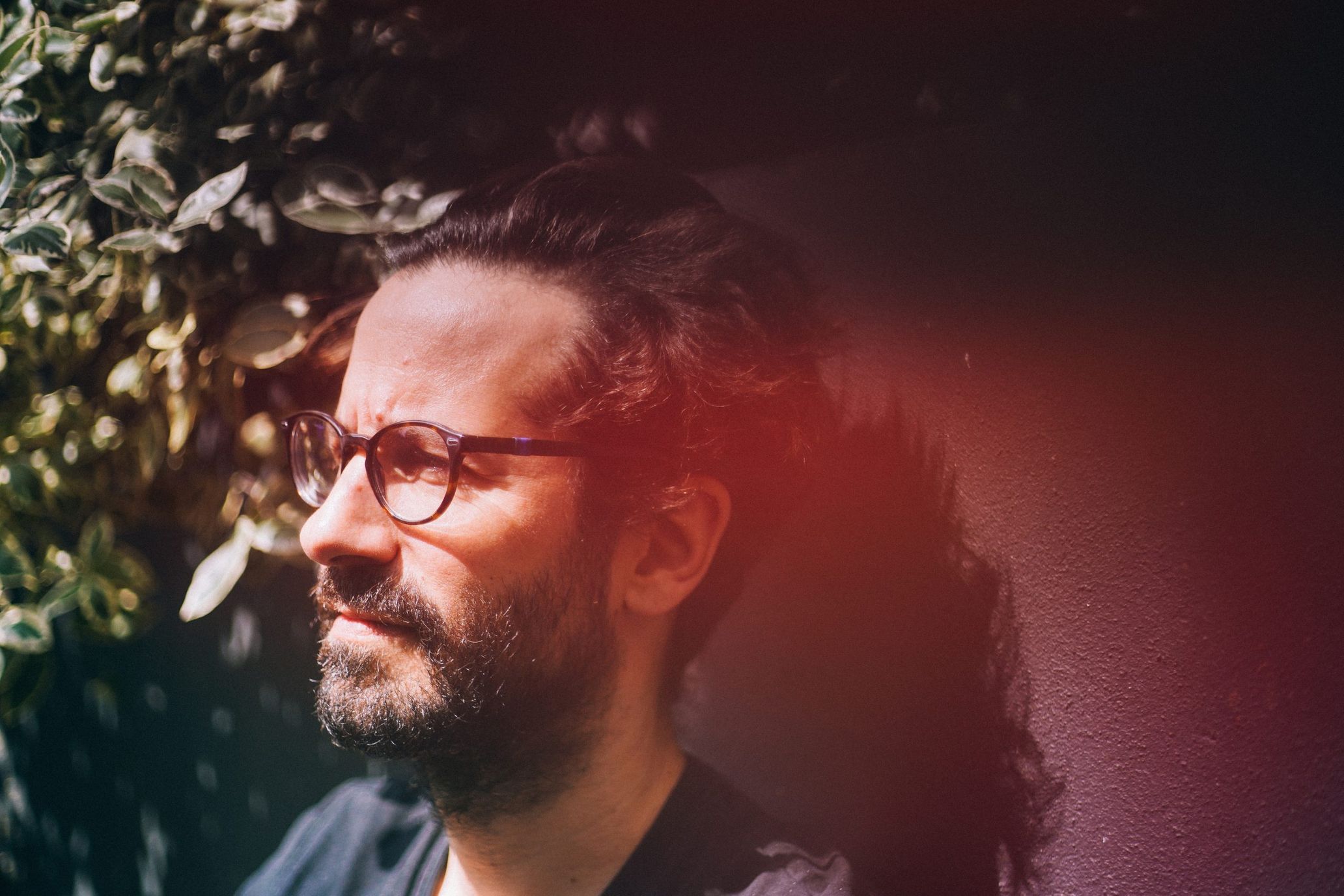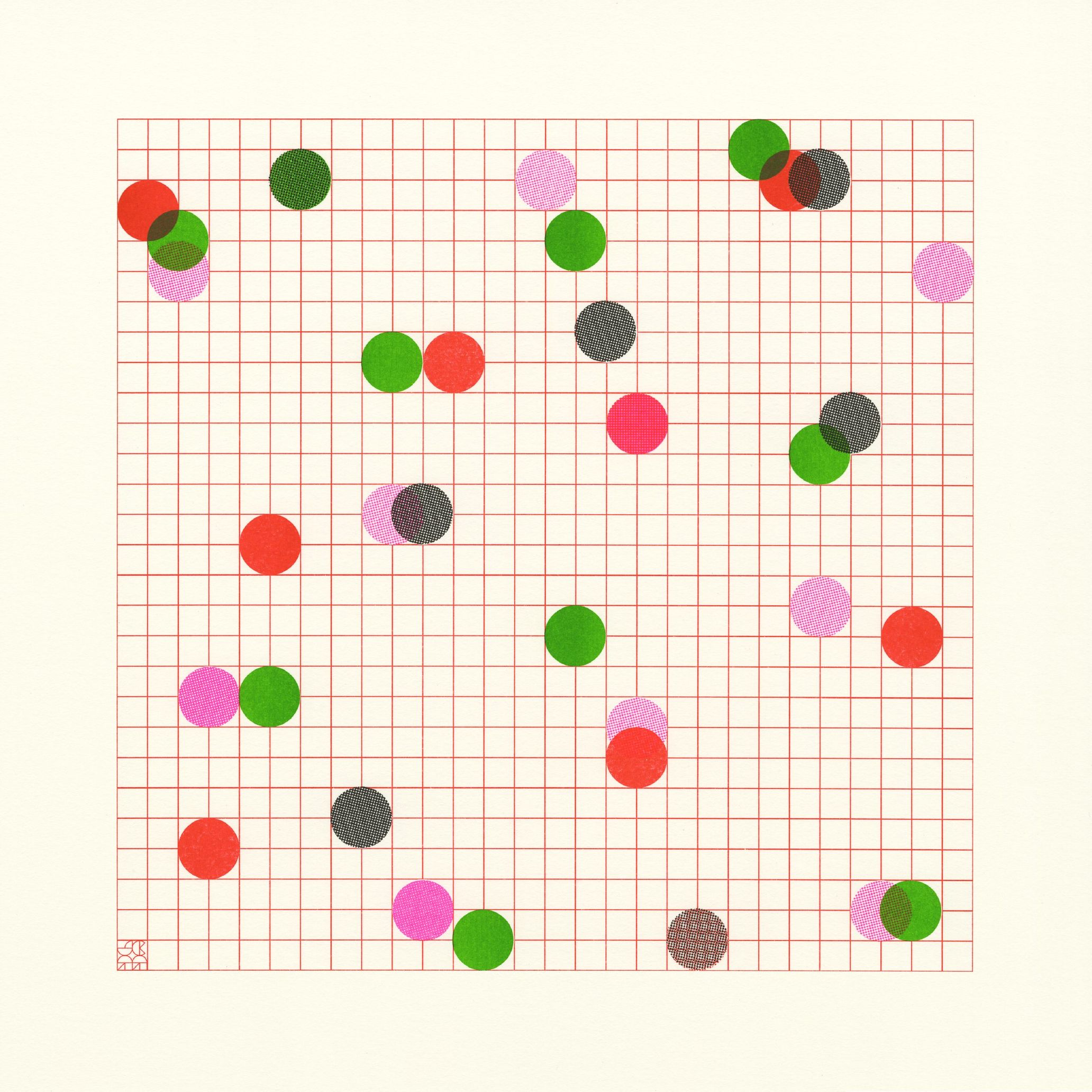Pascal Bideau, aka Akusmi, a French-born composer/multi-instrumentalist currently based in London, has given his debut album a name that could be taken as both meaningful and pessimistic: Fleeting Future. However, despite the title, the sound of this album is extremely optimistic. Using the gamelan slendro scale, which he became immersed in during a visit to Indonesia, he skillfully collages the minimalism of Steve Reich and Terry Riley, the fourth world concept of Jon Hassell, the hedonism of rave music, Motown-inspired beats, and the urban landscape of Katsuhiro Otomo’s legendary film “Akira” and Japan. The result of all these experimentations is magnificent, yet organic electroacoustic pop music. What is behind such eclectic sound worlds Akusmi constructs in a method that can be compared to the free association? And why did he choose the title “Fleeting Future”? We conducted an e-mail interview with him.

Photography Alex Kozobolis
My encounter with gamelan paved the way for blending what I learned from music from all over the world.
——Last year you released Fleeting Future, and it seemed to me that you were influenced by a variety of music, such as Steve Reich’s minimalism, the residue of rave music, the chaotic and hybrid nature of jazz, Jon Hassell’s concept of the fourth world, or sounds of Motown. But you seem to have created a soundscape that is different from all of that music, without being drawn into their disciplines. I don’t know if this is the right way to put it, but your music seems to be “music that shows me a different landscape every time I listen to it.” What kind of music had you listened to, what kind of challenges had you faced, and what kind of experiences had you had before you started making Fleeting Future?
Pascal Bideau: As far as I can remember, I have always been exposed to music from all around the world. My parents were (and are still) keen travellers and they always brought music and instruments from their trips. So, from Peruvian flutes, Tibetan horns to middle eastern rhythms, I have always been surrounded by very diverse sounds that were coming from outside the box of western music. But I have also grown up with a love for western music, especially music that pushes the envelope and plays with the rules, and there are definitely elements of that in jazz and minimalism, as well as in electronic experimental music.
What I have always wanted to do ever since I have been composing music is to find a way, or a genre that would allow me to mix all those very different influences into one. And I have been searching and failing for many years… It’s only when I bought a set of gongs on my return from a trip to Bali that I realized the path might very well have been found. That is when I started to work on Fleeting future.
——The gamelan slendro scale is used strikingly throughout this album. I understand that you immersed yourself in traditional gamelan and gong music when you visited Indonesia. What attracted you to this kind of music, and what did traditional gamelan and gong music bring about to your music?
Pascal: The really fascinating aspect of Balinese gamelan is its hugely social role: it all derives from Banjar, a small community group within a village. Every village has a small “plaza” with a music stand hosting a gamelan ensemble. It is as important in the life of the community as other prominent activities like rice farming. It is played by the people of the village with a strong emphasis on unison and shared parts. In the same way rice farmers have developed alternating watering patterns for maximum efficiency in production, gamelan musicians have coordinated interlocking melodies for maximum expression. When some pieces of gamelan music start accelerating, it is so fast that it would be physically impossible without cooperation between paired players. This is the true magic of the gamelan, a genuine representation of what the cooperation between people can achieve: a sound that transcends individuality and renders the impossible possible.
It had a huge influence on the way I write parts that interlock and cooperate with one another. Sometimes, the layering of two or more parts creates another part, another musical phrase that you can clearly hear but isn’t actually played by any of the instruments. It’s just a result of the whole.
Musicians participating in Fleeting Future and influences from the film AKIRA

——You made Fleeting Future between 2017 and 2019. What was the production process of this album like? Also, the album features performers such as Ruth Velten, Daniel Brandt, and Florian Juncker; what did they bring to this work?
Pascal: I composed the whole of the album in my studio in Camden, London where I recorded most of the instruments myself. For some saxophone parts though, I wanted a very clean and articulate sound so I asked the great Ruth Velten to come and join the adventure. I also asked Florian Juncker to play some trombone parts, an instrument I don’t play myself but really wanted to integrate in the colour palette that Florian expresses so well. As for Daniel Brandt, I have been collaborating with him for years and I greatly admire his approach to rhythm and sound. He recorded all the drums parts in Berlin.
——I thought the high-energy “Neo Tokyo” was one of the highlights of the album. I heard that “Neo Tokyo” was inspired by Katsuhiro Otomo’s Akira. What attracted you to this movie and how did you try to express that inspiration through your music? Also, the music of the Japanese musical collective Geinoh Yamashirogumi is used in the movie impressively. What do you think about their music?
Pascal: I first watched Akira when it was released in France, I must have been 13. I was totally blown away and it stayed with me ever since. I remember the hair raising on my neck when I first discovered the opening sequence with the long shots of Neo Tokyo and the marvellous polyrhythms of Geinoh Yamashirogumi. It was only much later that I learned about Tsutomi Ōhashi and the fact that he was a molecular biologist. It makes complete sense to me, with all these musical and rhythmical motives and ideas interacting at different pace and bouncing off each other. That is exactly what I set to try doing with Fleeting Future. And Neo Tokyo is the perfect example. It’s a hectic piece with no starting point nor ending. It’s full of elements all doing their thing and it’s the combination of these little ostinatos that create the groove and the whole. It really made me think about the futuristic Tokyo of Akira, with its laser lights spreading in all directions and its monumental skyscrapers flickering all around.
——I heard that the final song “Yurikamome” was inspired by a YouTube video of someone driving through Japanese landscapes and cities. “Yurikamome” is characterized by its majestic development, in which various sounds are layered on top of each other as the song progresses. What part of the Japanese landscapes and cities did you get inspired by and why did you decide to create a song with such a majestic development?
Pascal: Yurikamome is the last track of the album and it was also composed last. It is an ending and a new beginning at the same time. I was directly inspired by a YouTube video of the Yurikamome line in Tokyo, the monorail train that takes you from Shinbashi to Toyosu in Odaiba and goes through Tokyo Bay, the Rainbow Bridge, and most of Odaiba island. I had found the very first piano motif you hear in the piece, and I let it unfold while watching the landscape evolve and adding layers. If it sounds majestic, it is because that’s the idea I have of Tokyo.
The groove and improvisation that underlie the album, and the thoughts behind the words “Fleeting Future”.
——One of the things that struck me about this work is that there are some elements that induce dancing. I think “Divine Moments of Truth” is a prime example (as are “Longing for Tomorrow” and “Neo Tokyo”). What does dancing mean to you?
Pascal: I love moving along to the music. I love music with a pulse that imprints its groove on you and makes you react to it. All of the pieces on Fleeting Future have a groove to them, and they all happen within a very rhythmical context.
——I can feel elements of improvisation in some parts of this work. What do you think is the appeal of improvisation? What do you think is the difference between improvisation and composition?
Pascal: In a way, I have the feeling that everything comes from improvisation. Every time I set out to play and compose, I first improvise. I take an instrument and record whatever comes out. Now, some things are going to be good, and some aren’t. And that’s when the composition process starts: when you decide what improvised parts to keep and develop further, and what other parts need to be created to make it go where you feel compelled.
——The title of this work, “Fleeting Future,” is also impressive. Why did you choose this title for the work, which has a somewhat optimistic feel to it? Why is the future “fleeting” for you? Can you share your thoughts on that?
Pascal: This title came to me the very first time I discovered that musical phrase and played around with it. I needed to name it to save it, and Fleeting future very naturally fell off my fingers onto the keyboard… It’s as if it came with the music.
The concept can take various meanings. Of course, one could think of it as a way to express the climate emergency and point a warning finger at the fleeting character of the future of humankind. But it is really about the feeling I have that it seems we left a linear approach to the future to enter an arborescent one, where all the data and information we have about what could happen is exponentially ever-growing. That is what makes it fleeting. Following a branch might allow you to glimpse into what it may become, but the evolution of the whole picture might very well render the prediction totally obsolete or even meaningless.
——Finally, if you were to put “Fleeting Future” on your record shelf, what albums by what artists would you put next to it? It would be great if you can also tell us why.
Pascal: There would definitely be a version of Terry Riley’s In C, probably the one Africa Express did with Andre de Ridder. This is so much for the composition method of Riley than the orchestration. There would also be A Love Supreme by John Coltrane, for everything really, as it is one of my favorite albums of all times. Thematically, Fleeting Future owes a lot to this fantastic album. There would definitely be some Moondog music, most probably Sax Pax for a Sax; some Pharoah Sanders (Jewels of Thought), Ethiopian jazz and definitely music from Bali and Java.
Translation Shynichiro Sato(TOKION)
